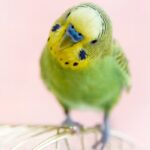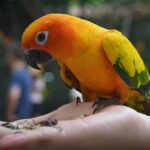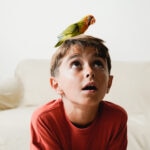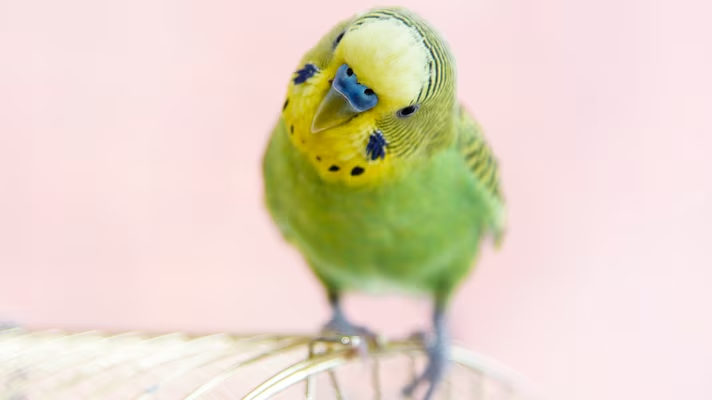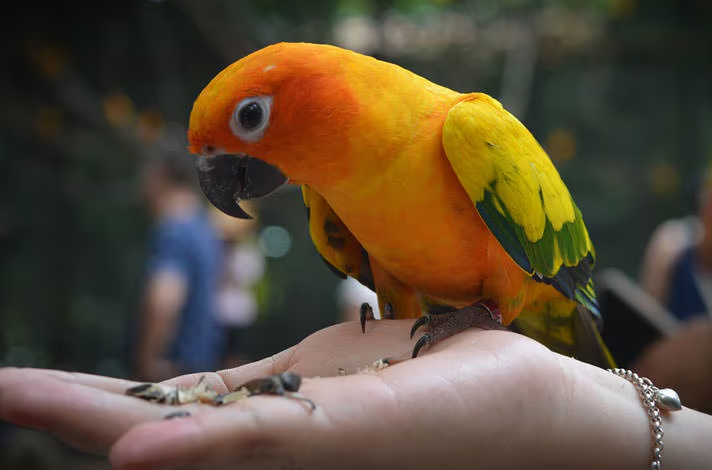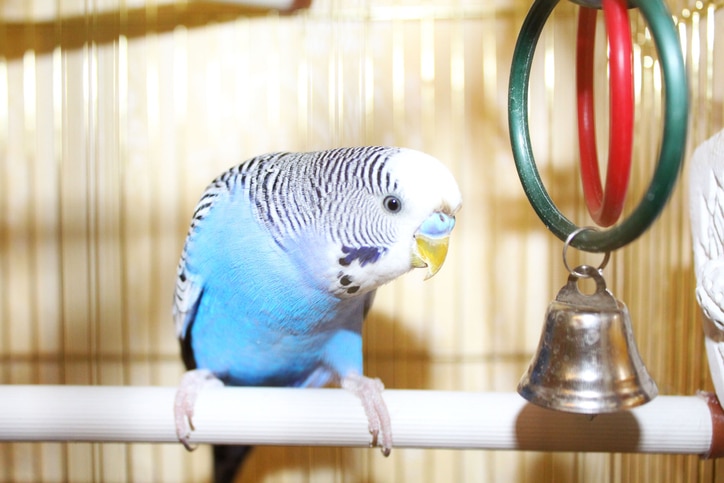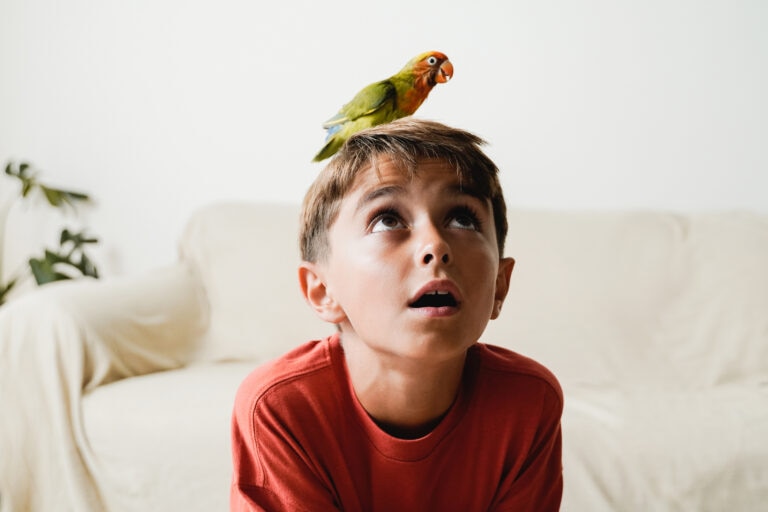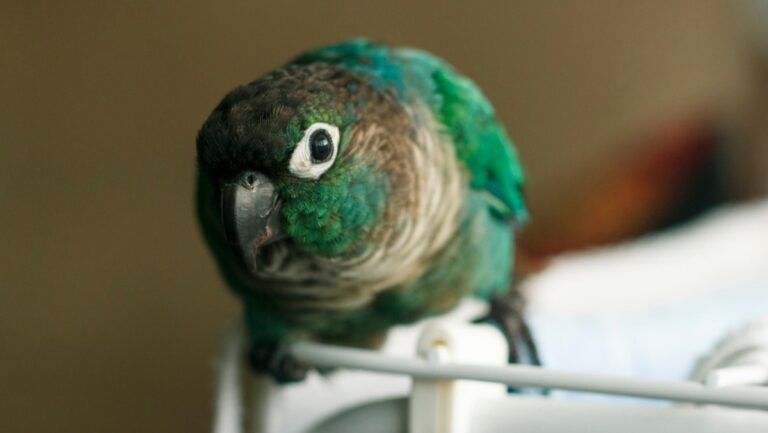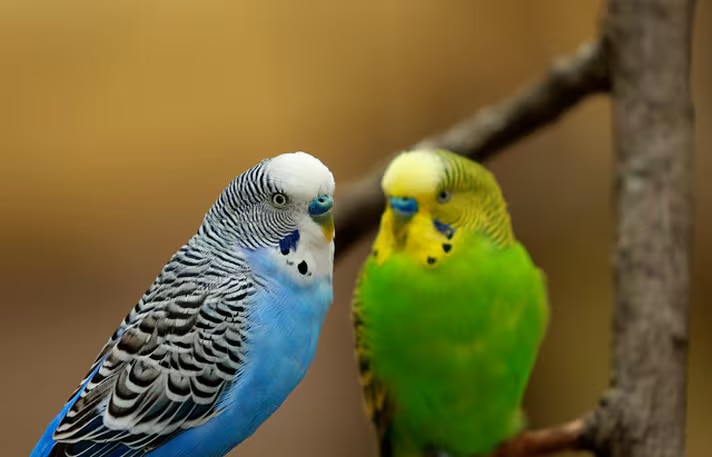Bossy And Aggressive Budgie/Parakeet

Photo by Chewy
Q.
I have several budgies housed in one cage and a cockatiel in a separate cage in the same area of one room. One of my budgies, a female, is becoming more and more aggressive toward the cockatiel. She flies at his head and tries to bite him. I have stopped letting her out of the cage, and I put her in a separate pet bird cage when I let the others out. I don’t think this is good for her, but I don’t want her to hurt the cockatiel.
The cockatiel cage has large enough bar spacing that even if I don’t open his cage door, she can slip into his cage and attack him. His wing feathers are trimmed so he is at a disadvantage. Is there any way to discourage the budgie’s aggressive behavior? She has been acting this way for several months, but it is worse since we adopted a new budgie about two weeks ago.
A.
The flock dynamics of the budgies is difficult to fully assess with a short description. Is this female bonded to a male budgie housed in the same cage? Is she nesting, or does she seem to want to? For some reason, she’s decided that the cockatiel is a threat.
As with any unwanted behavior, aim for eliminating the problem or diverting the pet bird’s focus. When the behavior is aggression, the safety of your nonagressive bird is top priority.
My first suggestion is that you house your cockatiel in a pet bird cage that is safe for it, with smaller bar spacing that the budgie can’t get through.
Have you tried moving the cockatiel’s cage into a different room? The birds might vocalize to maintain contact, but if they don’t that’s a solution.
Place the cockatiel out of the budgie’s sight by putting a piece of furniture or row of bird toys between the bird cages, or hang a towel on that side. Consider trimming the aggressive budgie’s wing feathers or placing her in a roomy cage where she can’t get at the cockatiel.
Is Your Pet Bird Aggressive? Signs To Look For:
- Raising wings
- Hissing at another bird
- Biting another bird’s feet
- Picking at another bird’s feathers
- Chasing another bird around the cage
- Driving another bird from food and/or water
Solution
If you see any of these signs, put the squabbling birds in separate cages to keep them safe. Then try to determine a cause of the aggression.
Is Your Pet Bird Jealous? Signs To Look For:
- Aggression toward the new bird
- Aggression toward you in presence of the new bird
- More vocalization for attention; change in behavior
Solution
Give your established flock as much attention as you did before the new bird arrived. Give your first birds treats when they?e in the presence of the new bird, thereby associating it with good things for them.
Is Your Pet Bird Territorial? Signs To Look For:
- Aggression towards the new bird
- Defending bird perches or a place in the house
- Guarding a food bowl
Solution
Try These Tips:
- Have several sets of bird food and water bowls for each bird so an aggressive bird cannot starve another bird.
- Evaluate the cage. Is it large enough, or is there tension because of crowding?
- Separate the pet birds into different cages.
Are Your Pet Bird Incompatible? Signs To Look For:
- Two birds staying on opposite sides of cage, or, if in separate cages, they are as far from each other as possible
- No social grooming or vocalization between them
Solution:
Separate the birds. Consider giving the birds mirrors so they can socialize with somebody they like!
Are Your Pet Birds Trying To Breed? Signs To Look For:
- Two birds do everything at the same time; vocalize, sit side by side; preen each other
- Birds start claiming a nest area and defending it
- Females lay eggs
Solution:
Discourage breeding behavior in small birds.
- Give your birds only 10 to 12 hours of daylight time.
- Don’t give your birds access to dark recesses, such as bird tents or nest boxes.
- If your hen does lay eggs, allow her to sit on them for about 10 days before taking them. Be strict about giving her only 10 to 12 hours of daylight to stop her hormonal cycle.
By: Diane Grindol
Featured Image: Gina Cioli/Lumina Media
